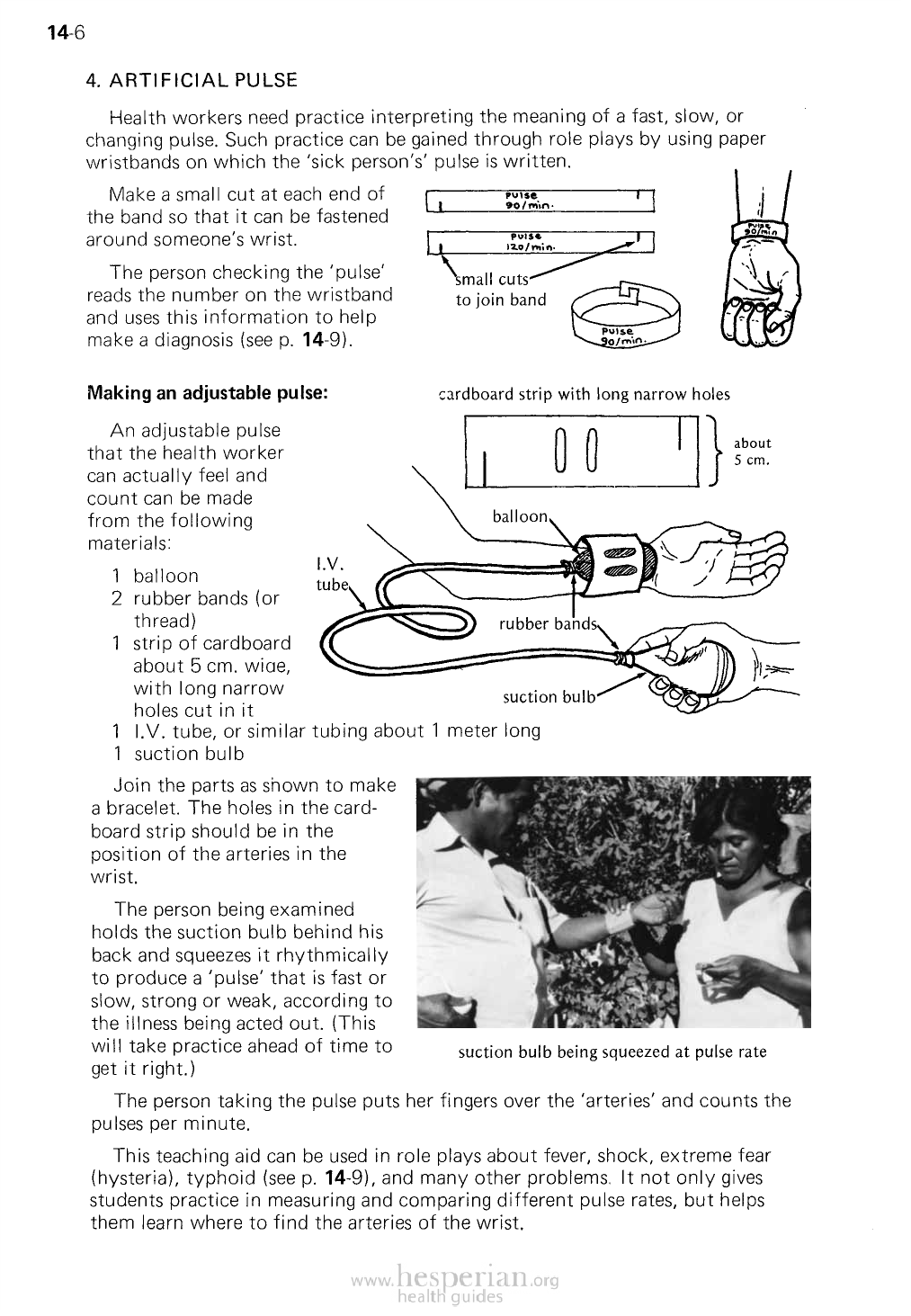
14-6
4. ARTIFICIAL PULSE
Health workers need practice interpreting the meaning of a fast, slow, or changing
pulse. Such practice can be gained through role plays by using paper wristbands on
which the ‘sick person’s’ pulse is written.
Make a small cut at each end of
the band so that it can be fastened
around someone’s wrist.
The person checking the ‘pulse’
reads the number on the wristband
and uses this information to help
make a diagnosis (see p. 14-9).
small cuts
to join band
Making an adjustable pulse:
An adjustable pulse
that the health worker
can actually feel and
}cardboard strip with long narrow holes
about 5
cm.
count can be made
from the following
balloon
materials:
1 balloon
2 rubber bands (or
I.V.
tube
thread)
1 strip of cardboard
rubber bands
about 5 cm. wiae,
with long narrow
holes cut in it
suction bulb
1 I.V. tube, or similar tubing about 1 meter long
1 suction bulb
Join the parts as shown to make
a bracelet. The holes in the
cardboard strip should be in the
position of the arteries in the
wrist.
The person being examined
holds the suction bulb behind his
back and squeezes it rhythmically
to produce a ‘pulse’ that is fast or
slow, strong or weak, according to
the illness being acted out. (This
will take practice ahead of time to
get it right.)
suction bulb being squeezed at pulse rate
The person taking the pulse puts her fingers over the ‘arteries’ and counts the
pulses per minute.
This teaching aid can be used in role plays about fever, shock, extreme fear
(hysteria), typhoid (see p. 14-9), and many other problems. It not only gives
students practice in measuring and comparing different pulse rates, but helps them
learn where to find the arteries of the wrist.